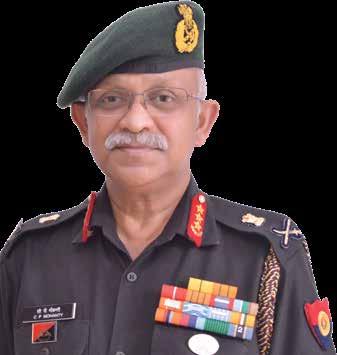INTERVIEW
GEOINT WILL BECOME THE MOST POWERFUL TOOL FOR A COUNTRY Strides in visualization technologies enable us to visualize remote geospatial data and compute progress of works and threats, and provide timely mitigative measures, says Sajid Mukhtar, Chairman & Managing Director, Roter Group of Companies, in an interview with Geospatial World. Space 4.0, which is closely intertwined with 4IR, is going to shape the future of Earth Observation. How are modern technologies like AI, Digital Twin, Big Data influencing the geointelligence community? Space 4.0, a joint work of various governments, private bodies, society and politics, is going to enable geospatial intelligence (GEOINT) to be applied to a wide variety of fields and help solve problems.
Advances in remote geospatial sensors and major strides in in computing capabilities are already being harnessed in data analytics and Augmented Reality/ Virtual Reality technologies. Add ability to transfer data at lightning speeds and we would be having face to face communication in a virtual world with no pandemic bringing us to a halt.
With the increasing global geopolitical tension, how do you view the potential of geospatial services 34 | www.gwprime.geospatialworld.net | March-April 2021
and applications in the GEOINT sector?
For years the geospatial industry has been involved in planning, collection, processing and disseminating spatial data to provide intelligence about the national security and the operational environment. Technological advancements have made it possible to add time based data so that historical and current data can be visualized and intelligent projections can be made. Strides in visualization technologies enable us to visualize the remote geospatial data and compute progress of works and threats, and provide timely mitigative measures.
How is the UAV technology transforming the geospatial industry?
With advancements in information technology and the advent of cheaper and smaller sensors, Unmanned Aerial Vehicles (UAVs) have
become the ‘go to’ solution for all surveyors and mappers. Better integration with various payloads and the ease-of-use options offered by UAVs have started revolutionizing the way geospatial data is collected in many countries. In the field of Remote Sensing, UAVs are helping to rapidly replace traditional surveying and conventional aerial photography by providing accurate survey data and high spatial resolution aerial images (orthophotos) of the area of interest. Compared to manned aircraft, which are used in conventional photography, UAVs are cheaper to acquire and operate, and produce similar or better spatial resolution images. For now, the UAV technology is only restricted by its flight time or



















